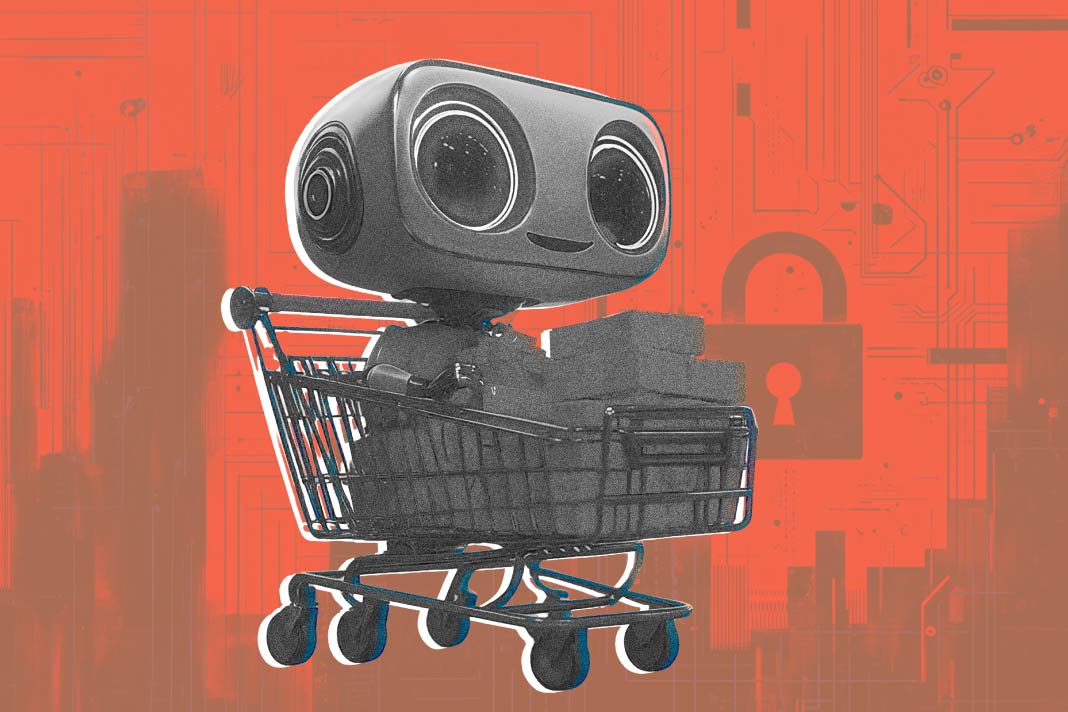Retailers vs. AI Bots: As the holiday rush hits, discover how e-commerce firms are using advanced AI to fight sophisticated bots that steal data, block inventory, and halt sales.
When the critical holiday shopping season arrives, e-commerce sites face an intense surge not only from human buyers but also from an increasingly sophisticated swarm of automated bots. These programs threaten revenue, erode consumer trust, and undermine market stability by scraping prices, hijacking accounts, and launching crippling distributed denial-of-service (DDoS) attacks. Understanding this escalating threat is crucial for businesses seeking to navigate the peak retail season successfully.
The Evolution of the Malicious Bot
Today’s malicious bots are far more than just nuisance traffic. Gone are the days of clunky scripts; modern automated actors are programmed to meticulously mimic human behavior, replicating mouse movements, clicks, and natural pauses during browsing.
These sophisticated scripts pose several commercial threats:
- Price and Data Scraping: Bots covertly extract competitor price points to enable undercutting or market manipulation.
- “Grinch Bots”: They automatically purchase limited-edition or high-demand holiday collectibles—such as sought-after sneakers—before real customers can, only to resell them at inflated profits.
- Digital Shelf-Blocking: Account takeovers surge before Black Friday, often resulting in “ghost carts” filled with items that are never purchased. Retailers lose sales as inventory appears unavailable, falsely indicating a sellout.
- DDoS Attacks: These attacks flood servers at critical times, taking websites offline. When a site goes dark during peak shopping hours, customers are often lost permanently, as illustrated by the December 2024 Europol operation that disabled 27 major DDoS services.
Why Traditional Defenses Fail
Legacy security solutions—such as basic CAPTCHA tests and simple IP blocks—are obsolete against adaptive, AI-driven attacks. While measures like rate limiting offer some protection, they risk turning away genuine shoppers, especially during time-sensitive flash sales.
Furthermore, traditional firewalls struggle to protect modern e-commerce sites, which rely heavily on APIs for everything from inventory checks to payment processing. Legacy tools often overlook shadow APIs, focusing solely on traffic patterns rather than the intent behind the request. To older systems, a malicious bot request can appear indistinguishable from legitimate user traffic.
Outsmarting Automation with Next-Generation AI
Given that 95% of stores are already planning to leverage AI for supply chain resilience, the foundation is in place to fight fire with fire. Retailers can deploy proactive, intelligence-based security to counter sophisticated automation.
Advanced Bot Management Tools
Modern solutions move beyond simple markers, such as speed and IP reputation. They synthesize signals from multiple angles—behavioral, environmental, and contextual. While bots can mimic subtle human markers, such as typing irregularities, they struggle to conceal deeper technical traits, including a browser lacking internal APIs or displaying mismatched screen metrics.
AI can also assess navigation rhythm. While humans zigzag, second-guess, and explore, scripts follow tight, predictable sequences. Flagging sessions with identical timing and paths is key to identifying coordinated automation.
Adaptive Rate Limiting
This technique replaces rigid request caps with a running trust meter. Instead of blocking all high-frequency requests, the system evaluates each session based on its reputation, cookie history, and browser fingerprint. A high-trust returning customer refreshing a sale page is allowed to pass, potentially with soft throttling, while an unknown device from a cloud network triggers immediate suspicion and checks.
Managed Challenges and Deceptive Elements
Since AI has achieved a near 100% success rate against traditional CAPTCHA, the industry is pivoting to managed challenges. These new tests focus on analyzing conduct during simple interactive tasks, such as dragging a slider or rotating an image, which require natural motor control and make automation difficult.
Additionally, behavioral traps are being woven directly into applications. This includes creating invisible form fields that human users cannot see, but which a bot reading the raw code will automatically fill out, making the malicious intent undeniable.
Locking Down APIs
AI security models enforce a strict zero-trust rulebook on APIs. The model doesn’t need to identify the malicious agent itself; it simply blocks any activity that deviates from the expected, perfect behavior of a legitimate visitor—such as sending malformed data, out-of-order call functions, or requests at impossible speeds.
A strong defense against automated traffic requires continuous monitoring and a proactive awareness of emerging attack trends. By staying ahead of malicious automation, e-commerce teams can ensure their sites remain fast, reliable, and accessible for real shoppers, not a holiday spree for the bots.



